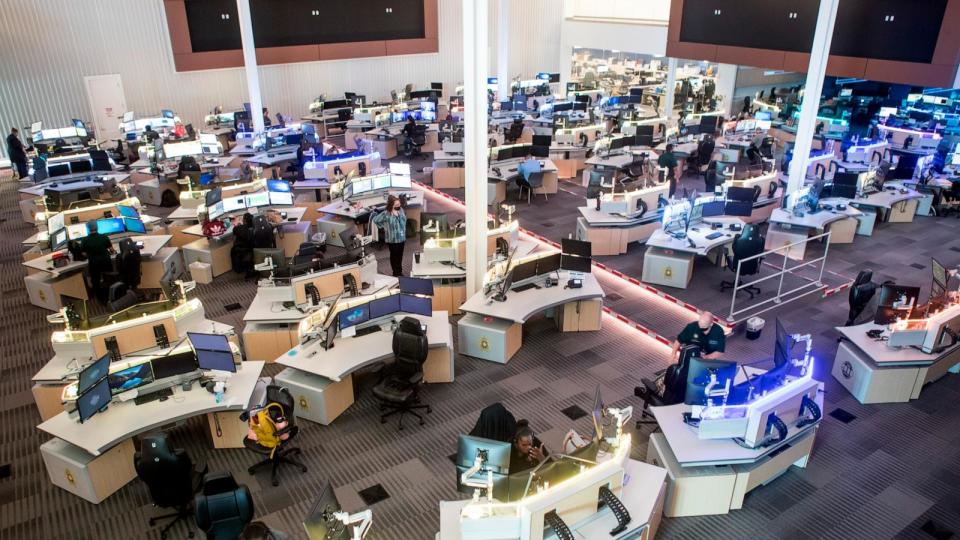Calling 911 is intended to save lives. But emergency services, and others like them, are also seen as targets for criminally-minded cyber attackers, according to a new federal assessment — and any vulnerability in those critical networks could expose victims to a host of dangerous ripple effects.
The analysis, compiled by the Department of Homeland Security (DHS) and obtained by ABC News, outlines concerns that the emergency response sector could be exploited and mined for sensitive data, which in turn hampers medical and law enforcement services and poses an ongoing threat to personal lives. information and public safety.
“Cybercriminal exploitation of data stolen during ransomware attacks against the Emergency Service Sector (ESS) is likely to pose a persistent criminal threat due to the disclosure and availability of victims’ personal information,” the April 10 bulletin said.
Ransomware attacks have “disrupted law enforcement networks and 911 call center operations,” the bulletin continued, putting computer-aided dispatch services out of action and forcing emergency responders to “return to manual dispatch to continue operations.”
Once stolen, potentially sensitive personal and police data could be leaked, sold or otherwise used by the attackers “to facilitate additional crimes – including extortion, identity theft and swatting,” according to the DHS bulletin.

MORE: The biggest threats to the 2024 election
“While cyberattacks were once considered a technology problem, today they are considered a threat to the activities of law enforcement and other public safety agencies,” said John Cohen, former chief of intelligence at the Department of Homeland Security, now an ABC News -contributor.
“Imagine the impact on local public safety if prison management systems were to stop working due to a cyber attack, if police communications capabilities were disrupted, if the public were unable to contact local police in an emergency, if detectives and investigators would not have access to sensitive case data. ,” Cohen added. “If a foreign terrorist group, or a nation state, can impede law enforcement actions by attacking their 911 call center, or if police departments cannot gain access to investigative or other important information – that will hinder their response to emergencies and a threat actors in achieving their operational objectives.”
And because of the fundamental and highly sensitive contingency systems, and the availability of personally identifiable information they contain, they may view cybercriminals as particularly attractive targets for extortion, the DHS bulletin said, due to “the possible perception that ESS entities are motivated ‘. to pay a ransom to ensure continuity of service.”
“If a police department, fire department or any emergency service is hijacked in any way, it’s a major public safety problem and you need to have a lot of resources to deal with it. And it can also prevent us from investigating,” said Robert Boyce, an ABC News contributor and retired chief of detectives at the New York Police Department.
The new federal analysis accentuates an already volatile moment in America, as partisan tensions build ahead of a high-stakes presidential election, multiple wars are being fought abroad and political violence has already erupted abroad.
Meanwhile, domestic extremists who still have the courage to attack are also adopting more mixed ideological grievances, intelligence analysts have found, making it increasingly difficult for authorities to identify the motivations behind attacks.


“As we enter election season, there is increasing concern that local communities will simultaneously face a combination of cyber information operations and physical attacks. The physical activities to disrupt the election process, and the cyber activities to disrupt the ability of local officials to respond,” Cohen said.
MORE: It’s become harder to identify the motivations behind mass attacks: DHS
In the 21st century, such threat actors are aided by a growing range of technological developments that provide new, creative tools, such as cyber attacks.
In January, a cyberattack hit the emergency communications department in Bucks County, Pennsylvania, outside Philadelphia, and affected the computer-aided 911 system — forcing dispatchers to use pen and paper to receive information from callers, according to ABC station WPVI.
That same month, the computer system in Fulton County, Georgia, was hacked, crippling many government services and causing weeks of after-effects.
State, local, tribal, and territorial governments “operate the majority of ESS networks and are among the groups most frequently targeted by ransomware actors, but most lack the resources to independently improve their cybersecurity posture,” the DHS bulletin said.


Furthermore, emergency responders “often” rely on state, local, tribal, and territorial government networks that “use outdated information and operational technology systems – the replacement of which can be prohibitively expensive or disruptive to operations – and which lack adequately trained and resourced information technology and resources to miss. cybersecurity personnel,” the bulletin said. It urged a “collaborative, cross-jurisdictional approach to cybersecurity and prioritizing cyber hygiene best practices” to protect vital networks from “unsophisticated network intrusions.”
“Good preparation is good prevention,” Cohen told ABC News. “The threat environment is volatile and complex, and the level of preparedness taking place at the state and local level exceeds anything I have seen in my more than four decades.”
Emergency services are a likely target for cyber attacks, DHS originally warns on abcnews.go.com